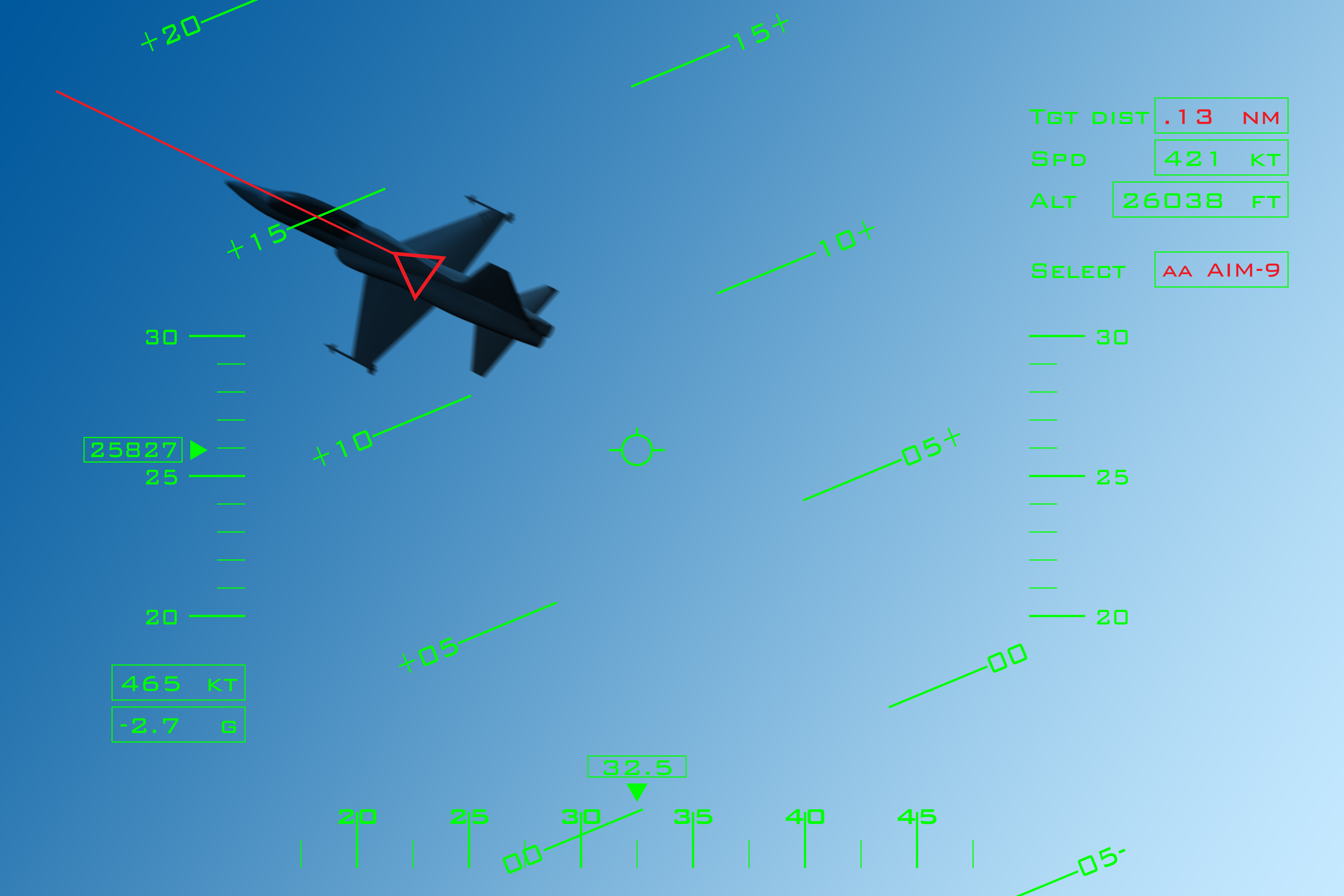Flight Simulation with Helmet Mounted Cueing System Capability
Posted: September 14, 2022

Simulators have come a long way, but one thing is consistent--fighter pilots must train with the highest level of realism possible. This can only be achieved using high-fidelity simulators, with a strong representation of the technology being used in live aircraft.
Today’s planes have incredible, state-of-the-art technology. One such technology is the Helmet Mounted Cueing System (HMCS), which allows pilots to see symbology through their visor, using an optic. HMCS have symbology to mark friendly positions, hostile targets, or other points of interest, increasing a pilot’s situational awareness.
HMCS Capabilities
Helmet Mounted Cueing Systems allow a pilot to look at a target on the ground and slew their targeting pod, enabling for faster air-to-ground weapons employment. Another benefit of HMCS is it can also be used for quickly looking and locking onto aerial targets, taking full advantage of high off-boresight missile capability.
Retrofit a Plane with the Latest HMCS Technology? Yes!
Most frontline U.S. fighters (such as the F-15, F-16, and F/A-18) are equipped with a HMCS, and more planes are being retrofitted with this technology every day. This is a great innovation, but it does have some challenges. When training pilots in older simulators, they are not training with a HMCS feature set. Luckily, Polhemus has the answer.
All that’s needed for pilot head tracking is a small EM tracking source in the simulator cockpit and a light-weight sensor on the helmet.
_1.jpg) Polhemus electromagnetic tracking is the easy solution for this HMCS upgrade. All that’s needed for pilot head tracking is a small EM tracking source in the simulator cockpit and a light-weight sensor on the helmet. Polhemus electromagnetic tracking has no line-of-sight requirements. Their tracking systems enable real-time measurement of the pilot’s head position and orientation at ultra-fast update rates. This delivers stable, low-lag data to the simulator’s visual rendering system.
Polhemus electromagnetic tracking is the easy solution for this HMCS upgrade. All that’s needed for pilot head tracking is a small EM tracking source in the simulator cockpit and a light-weight sensor on the helmet. Polhemus electromagnetic tracking has no line-of-sight requirements. Their tracking systems enable real-time measurement of the pilot’s head position and orientation at ultra-fast update rates. This delivers stable, low-lag data to the simulator’s visual rendering system.
Polhemus has been tracking pilot head movement on simulated and live aircraft for over 50 years. They are the global authority for this application.

